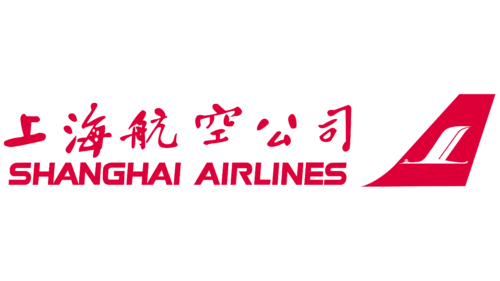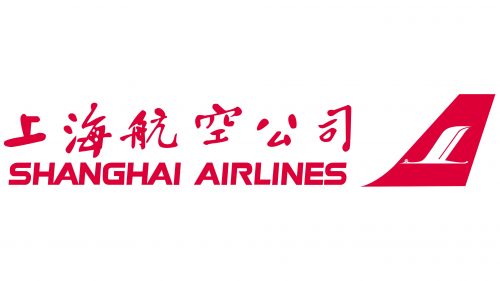 Shanghai Airlines is a Chinese Logo PNG
Shanghai Airlines is a Chinese Logo PNG
Shanghai Airlines is a Chinese: Brand overview
Shanghai Airlines was established on March 25, 1985, as a regional airline to serve the growing demand for air travel in Shanghai and surrounding areas. The Shanghai municipal government drove this initiative to cater to the economic boom in the Yangtze River Delta region. Initially, it operated as a division of Shanghai Aviation Industrial Company.
The airline launched its commercial operations on October 25, 1986, with its first flight connecting Shanghai to Hangzhou. The early fleet consisted of Antonov An-24 aircraft, ideal for short regional routes.
Throughout the 1990s, the company expanded its route network and upgraded its fleet. The airline acquired modern aircraft, such as Boeing 737s and McDonnell Douglas MD-11s, enabling it to fly longer distances more efficiently.
In 1997, the airline made a significant leap by starting international flights. The first international destination was Macau, followed by other Asian cities, marking the beginning of its global reach.
The company went public in 2002, listing its shares on the Shanghai Stock Exchange. This move helped secure additional investment for growth and operational expansion.
On December 11, 2005, the airline joined the Star Alliance, enhancing its ability to collaborate with other international carriers and offering passengers improved connectivity.
With its first Boeing 767-300 acquisition in 2006, the airline launched long-haul operations, opening routes to Europe and North America, thus significantly boosting its international presence.
In a major development, the company merged with China Eastern Airlines on July 12, 2009, as part of China’s aviation industry restructuring. Despite the merger, it maintained its brand and operated as a subsidiary of China Eastern.
Following the merger, the company exited the Star Alliance in 2010, aligning itself with the SkyTeam alliance through its parent company, China Eastern Airlines, to avoid conflicts of interest.
Between 2011 and 2015, the airline integrated with China Eastern Airlines, optimizing its routes and fleet to serve as a regional carrier within the group.
2016, the airline updated its fleet with a new Boeing 737 MAX aircraft to improve operational efficiency and passenger service quality.
Focusing on domestic growth, the airline expanded its operations in 2018 by adding new routes and increasing flight frequencies between major Chinese cities.
In 2019, the company continued to develop as an integral part of the China Eastern Airlines group, playing a crucial role in serving Shanghai and nearby regions.
Meaning and History
What is Shanghai Airlines a Chinese?
This Chinese airline is based in Shanghai and is known for its role in developing air connectivity in the Yangtze River Delta. As a subsidiary of China Eastern Airlines, the company operates a diverse fleet, including Boeing 737 and 787 Dreamliner aircraft, serving both domestic and international routes. It is recognized for its unique logo featuring the Chinese character “Hu,” symbolizing Shanghai. A distinctive feature of the carrier is its “City Route” program, offering convenient connections between flights for business travelers.
1985 – today
The logo of a Chinese airline based in Shanghai prominently features a crane. This symbol is easily recognizable by its thin white silhouette with a wide wing divided into two unequal parts. The bird is depicted in flight and appears on the red tail of the aircraft, enhancing its livery. The company name is displayed in Chinese and English and is arranged on two levels. The upper inscription has elegant characters, while the lower features bold English letters. The Chinese glyphs are composed of single dots and strokes, whereas the English letters are formed with thick and even lines. The emblem is predominantly red.
The crane, a bird often associated with longevity and good luck in Chinese culture, represents the airline’s dedication to providing safe and prosperous travel experiences. The bilingual inscription underscores the airline’s global reach and commitment to serving a diverse customer base. The dominant use of red in the emblem signifies a deep connection to Chinese cultural symbols, as red is commonly linked with good luck and joy.
The logo’s design elements combine to create a cohesive and meaningful representation of the airline’s identity. The crane in flight suggests a sense of freedom and journey, embodying the airline’s mission to facilitate smooth and enjoyable travel. The wide wing, divided into two parts, adds a dynamic element to the design, emphasizing movement and direction. The placement of the bird on the aircraft’s tail creates a visually striking image that passengers can easily recognize.
The logo’s use of Chinese and English text highlights the airline’s dedication to international service. The graceful Chinese characters add a touch of elegance, reflecting the airline’s cultural heritage. The bold English letters provide clarity and strength, ensuring the name is easily readable for a global audience. This combination of text styles enhances the logo’s appeal and effectiveness in different markets.




